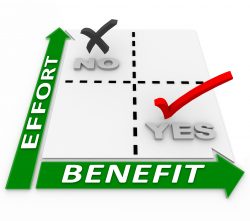 A Chama can be described as an is an important, dynamic unit working together to achieve success in accomplishing a goal through investment.
A Chama can be described as an is an important, dynamic unit working together to achieve success in accomplishing a goal through investment.
First, the work of the team needs to be clearly defined and matched to some real needs of the Chama.As a Chama is formed aligning one self with the the right team members is critical.
Ideally, Chama should be small/ manageable so that members can develop a high-level of connection and interdependence.A formalized start-up activity will help the team define its mission, deliverables, roles & responsibilities, and success factors.
How can you build a successful Chama?
Mission
It is the shared commitment to a specific mission that helps define a team.
A mission statement can provide powerful documentation about the team’s purpose. Creating a mission statement requires team members to think about, discuss and come to agreement on the following questions:
- What is the work we were brought together to do?
- Why can this work best be done as a team?
- What will be different as a result of our working together?
- What will our work create for our Chama, our team and ourselves?
Goals
Mission statements give a team guiding principles, but goals give the team a real target for their activity.
Goals should be something worth striving for important results that the team can provide for the organization.
The best goals are S-M-A-R-T goals:
- Specific
- Measurable
- Achievable
- Relevant
- Time-bound.
Roles and Responsibilities
It’s particularly important in a team environment that team members know what is expected of each of them.
Without these expectations, members can’t develop mutual accountability or trust in the team.
When a team’s expectations are clear and members meet (or exceed) expectations, trust and an increased sense of “teamness” are natural by-products.
Team Leader
- Team leader is the individual(s) who are held accountable for the team’s results.
- The Team leader often serves as a spokesperson for the team and may also be responsible for coordinating the team’s work.
The Teams’ Secretary
- The Secretary is responsible for guiding the team’s process.
- This might include helping to set agendas for team meetings and running the meetings.
Ground-rules
- To be effective, teams need to be explicit about the ways they will work together.
- Ground-rules are guidelines for specific behaviors.
- Teams don’t need a lot of ground-rules to work together well, but everyone on the team should agree to the ground-rules and share responsibility for ensuring that they are followed.
Decision-making
- Teams may choose different models for making decisions; the most important factor is that the decision-making model be explicit and understood by all team members.
- A clear decision making model describes who makes the decision and how others will be involved.
- Knowing what decision-making model will be used lets team members know what to expect and what is expected; this can help build support for the final decision.
Good decisions have two characteristics: quality and commitment.
Quality Decisions
- Quality decisions are logical, supported by sound reasoning and good information.
- Steps towards making quality decisions include checking to see if all available information has been gathered and shared, that all team members have been consulted, and that critical input has been considered as appropriate.
Commitment
- Commitment is demonstrated by the active backing for the decision by every team member.
- Each team member agrees with the decision, is committed to carrying out the decision, and understands their individual role in doing so.
Effective Group Process
Communication
Using ground-rules as a starting point, teams need to develop practices for open communication.
Examples include:
- Listen respectfully and respond with positive interest to ideas from team members.

- If an idea is confusing or seems unconventional or odd to you, ask for more information to understand the idea better.
- Help create an environment that encourages team members to share all ideas – even the “half-baked” ones.
Mutual Accountability
- Each member of a team is responsible for the success of the team as a whole.
- This is the interdependence that makes teams stronger than the sum of their parts.
- Working together towards specific tangible results is the best way to start creating mutual accountability.
- Recognize and celebrate small accomplishments and successes of individuals and milestones (large and small) for the team as a whole.
- By acknowledging successes, team members can develop an increasing trust in their teammates and the team as a whole.
Categorised in: Basics, General, Growing
This post was written by
Please Subscribe and get Notified when new articles are posted
